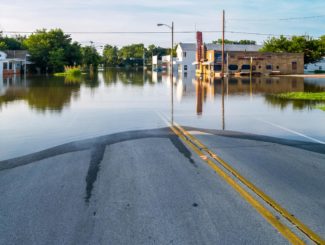July 15, 2024
By Jake Newhall, Director of Water Resources, WSB and Bill Alms, Project Manager in Water Resources, WSB
WSB is Leading a New Study that Will Assess the Effectiveness of Pond Sediment Removal for Phosphorus Management in Stormwater Ponds.
Stormwater ponds are an effective way to treat and control stormwater runoff. However, recent studies have indicated that there may be an increasing threat of phosphorus being released from stormwater ponds that can increase pollutant loading to lakes, streams, and wetlands. To address this concern, WSB, the University of Minnesota and six Minnesota communities have come together to perform a study funded by the Minnesota Department of Transportation Local Road Research Board. This study will provide practical data that will help communities across Minnesota manage their stormwater ponds and ultimately improve water quality.
With that in mind, here is what communities and their residents can expect.
What Does The Study Entail?
Six Minnesota communities – Maple Grove, Plymouth, Prior Lake, Savage, Burnsville and Woodbury – will each provide one stormwater pond project to be used as the basis of the study. During the summer of 2024, researchers will visit each pond, take sediment samples and run analysis to determine how much phosphorus is in the basin and how much phosphorus release potentially exists. Then, in the winter of 2024, each pond will undergo a pond dredging project that removes sediment buildup. Following the dredging projects, new samples will be taken during the summer of 2025 to analyze and determine whether current maintenance processes for stormwater ponds can address phosphorus release concerns.
Why Is The Study Needed?
Minnesota has over thirty thousand stormwater retention ponds that treat and control stormwater runoff, but also risk discharging pollutants that impact water quality. Additionally, stormwater ponds are used across the country, meaning that if current dredging practices are not working as intended, the data gathered by this study will directly impact stormwater management regionally and nationally. Primarily, this study will provide much needed data to make new recommendations on how to tackle and prioritize maintenance to maximize pollutant removal.
Phosphorus is particularly detrimental to water quality as it causes the growth of algae in lakes and rivers. Algae blooms not only lower water quality, but also reduce oxygen in the water and are toxic to people and wildlife alike, with studies attributing algae blooms as a potential cause for detrimental health conditions.
What Is WSB Doing To Help?
WSB’s team of experts understand how to manage and improve water resources. WSB is innovating, looking at the science and developing cutting edge tools and techniques to help communities better manage stormwater runoff and water quality. As the study commences and the final data sets are made available in 2025, the work of our talented team will provide the information necessary for communities in Minnesota and across the country improve their programs and to protect their water and their residents.
Jake has more than 18 years of engineering experience and has managed and designed many types of water resources projects, including modeling, planning, design, maintenance programs, and construction. He has worked with numerous watershed municipalities, counties and state agencies.
[email protected] | 612.990.3576

Bill is a project manager in WSB’s Water Resources Group with over 10 years of experience serving clients with their water resources engineering needs. Bill’s experience includes planning, design, and construction management for a wide range of water resource projects including water quality treatment BMPS and erosion stabilization.
[email protected] | 952.388.4188


